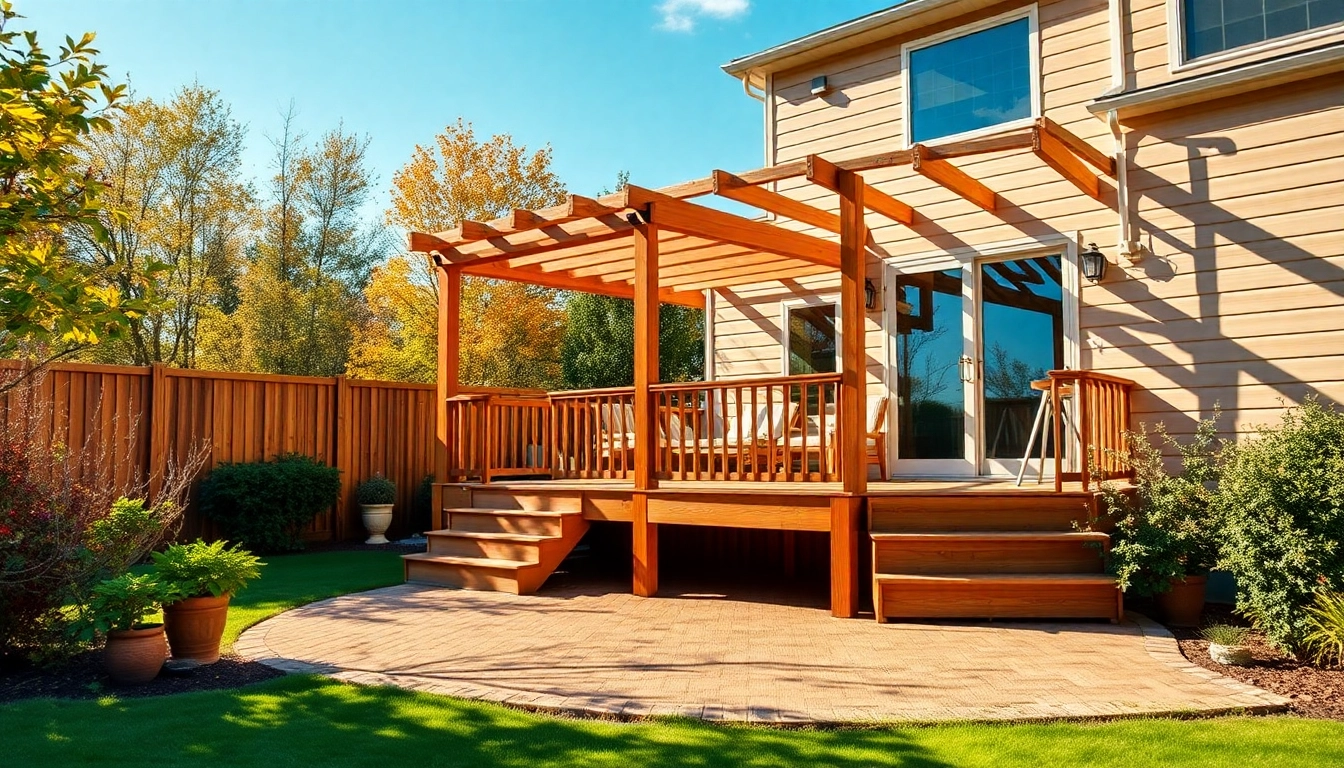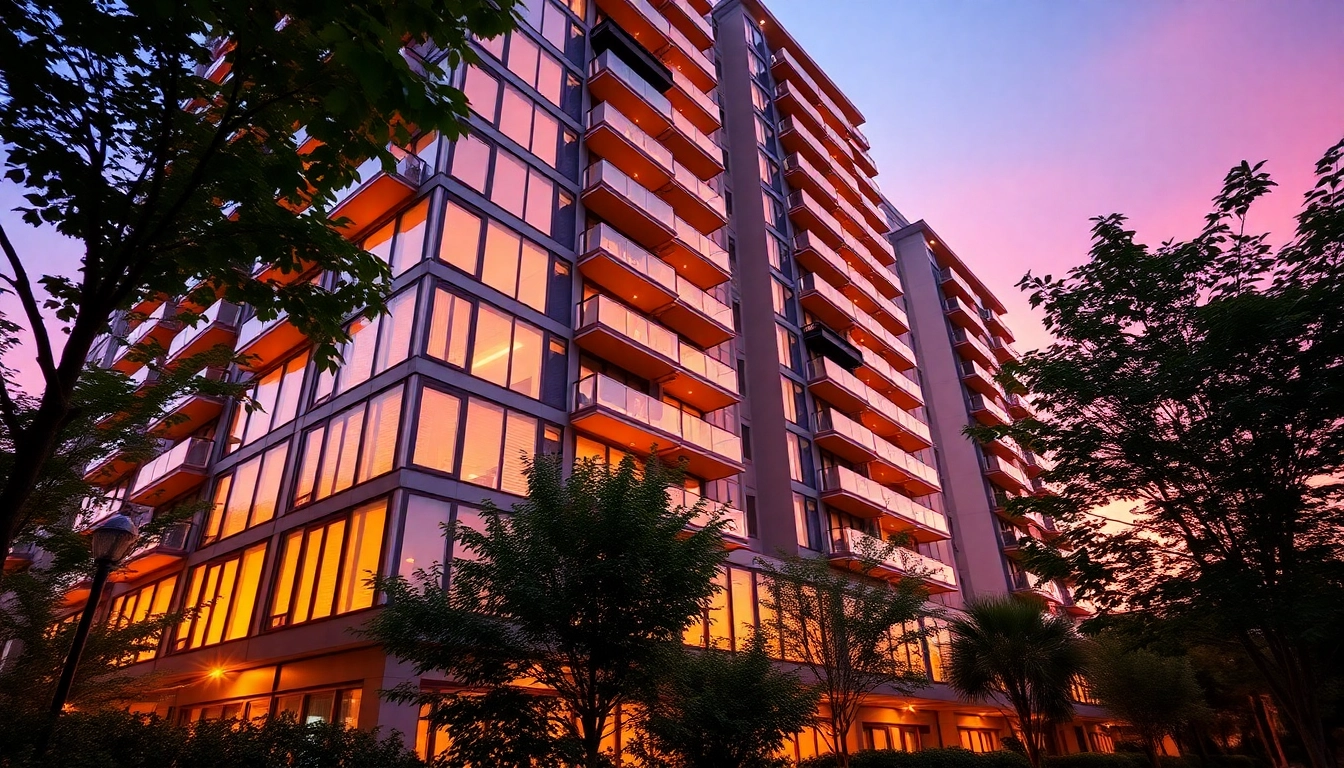Understanding Deck Construction Basics
What is Deck Construction?
Deck construction refers to the process of designing and building an outdoor structure that extends from a residence or building. Typically made from wood or composite materials, decks serve a multitude of purposes, from creating outdoor living spaces for leisure and entertainment to enhancing the beauty and functionality of a home. The primary objective of deck construction is to provide a safe, durable, and aesthetically pleasing area that withstands the elements while offering comfortable space for gatherings.
Key Components of a Deck
Understanding the anatomy of a deck is crucial for successful construction. Here are the essential components:
- Footings: The foundation of the deck, footings support the primarily vertical loads and must be placed below the frost line to prevent shifting.
- Posts: Vertical supports that transfer the load of the deck to the footings.
- Beams: Horizontal components that support the joists and transfer loads to the posts.
- Joists: The boards that span the beams and provide the primary support for decking boards.
- Decking: The surface layer that you walk on, typically made from wood, composite, or PVC materials.
- Railings: Safety barriers around the deck, essential for elevated decks to prevent falls.
Materials Overview for Deck Building
Choosing the right materials is a paramount aspect of deck construction. The most common materials include:
- Pressure-Treated Lumber: Cost-effective and resistant to decay, used frequently for structural components.
- Cedar and Redwood: Naturally resistant to insects and moisture, these woods are known for their aesthetic qualities.
- Composite Decking: Made from a blend of wood fibers and plastic, composite decking offers durability and low maintenance.
- PVC Decking: A synthetic alternative to wood, it is resistant to fading, staining, and scratching while requiring minimal upkeep.
Planning Your Deck Construction Project
Choosing the Right Location
The first step in planning your deck is to determine its best location. Consider the following factors:
- Sun and Shade: Decide whether you want a sun-drenched spot or a shaded area. Proximity to trees can also influence sunlight and temperature.
- Accessibility: Ensure easy access from your home to the deck, which will encourage usage.
- Views: Position the deck to take advantage of desirable views while minimizing obstructions from surrounding structures.
- Privacy: A location that provides seclusion from neighbors can enhance your outdoor experience.
Design Considerations for Your Deck
The design of your deck will significantly impact its functionality and aesthetic appeal. Factors to consider include:
- Size and Shape: Consider how you will use the deck. A larger deck accommodates more furniture and gatherings.
- Multi-level Designs: If terrain permits, consider a multi-level deck for added character and space division.
- Incorporating Features: Consider adding built-in seating, planter boxes, or a pergola to enhance the space.
- Railing and Stairs: Pay attention to safety features and ease of transition between different levels.
Obtaining Necessary Permits
Before any construction begins, check your local regulations regarding deck construction. This process may require:
- Building Permits: Often required for any deck over a certain height or size.
- HOA Approval: Homeowners Association may have specific guidelines and requirements.
- Inspections: Compliance with local building codes to ensure safety and quality.
Step-by-Step Guide to Deck Construction
Preparing the Ground and Setting Footings
Preparation is key to a successful deck build. Follow these steps:
- Clear the Area: Remove any vegetation, debris, or obstacles.
- Mark the Layout: Use stakes and string to outline the shape of your deck.
- Dig Footings: Based on your local frost line, dig holes for footings, ensuring they are deep enough for stability.
- Pour Concrete: Set rebar within the holes to reinforce, then pour concrete and allow it to cure as recommended.
Framing Your Deck
The framing is the backbone of the deck and is crucial in providing structural integrity. Here’s how to frame properly:
- Attach Ledger Board: Secure a ledger board to your home, ensuring it is level and properly anchored.
- Install the Posts: Cut posts to desired length, secure each post in footings using post brackets.
- Attach Beams: Connect beams horizontally between posts to form a strong framework.
- Lay Joists: Space joists evenly, typically 16 inches apart, and attach them to beams using joist hangers.
Installing Decking Boards and Railing
With the frame set, you can now lay down the decking and install railings:
- Lay Decking Boards: Start from one side and lay boards perpendicular to joists, leaving a small gap for drainage.
- Secure Boards: Use galvanized screws or fasteners to attach boards securely, avoiding nails to prevent popping.
- Install Railing: Depending on the design, attach vertical posts followed by horizontal rails, ensuring all elements comply with safety codes.
Deck Construction Tips for Success
Common Mistakes to Avoid
In deck construction, several common pitfalls can lead to structural issues or aesthetic dissatisfaction. Avoid these mistakes:
- Poor Planning: Neglecting to thoroughly plan can lead to design flaws or code violations.
- Inaccurate Measurements: Always double-check measurements to prevent material waste and ensure a uniform final product.
- Skipping Permits: Failing to obtain necessary permits can result in costly fines and project delays.
- Compromising on Materials: Using subpar materials can lead to increased maintenance costs and safety issues in the long run.
Best Practices for Durability
To ensure your deck remains sturdy and attractive for years, follow these best practices:
- Use Quality Fasteners: Opt for stainless steel or coated screws to reduce rust and corrosion.
- Properly Seal and Stain: Regularly apply sealant or stain to protect wooden materials from moisture, UV damage, and decay.
- Regular Inspections: Periodically check for issues like loose boards, weakened railings, or signs of wood rot.
Enhancing Functionality with Design Features
To further improve your deck’s functionality, consider adding:
- Built-in Seating: Incorporate benches or planter boxes along the edges for added seating and aesthetics.
- Lighting Elements: Install deck lighting for safety and atmosphere, enhancing evening usability.
- Outdoor Kitchens or Bars: An outdoor kitchen can turn your deck into a focal point for entertaining and increases its usability.
Maintaining Your Deck After Construction
Routine Maintenance Steps
Once your deck is built, routine maintenance ensures its longevity and beauty:
- Regular Cleaning: Sweep away debris and clean with a specialized deck cleaner to prevent mold and mildew growth.
- Inspect for Damage: Check boards, railings, and fasteners for any signs of wear or damage, addressing issues promptly.
- Reseal and Stain: Depending on the material, reseal wood decks every few years to protect from moisture and UV rays.
Seasonal Care Tips
Seasons can impact the maintenance needs of your deck:
- Spring: Clean the deck thoroughly to remove any winter debris, and inspect for any damage incurred during harsh weather.
- Summer: Apply sunscreen-protectant products to prevent fading and damage from intense sunlight.
- Fall: Rake leaves and clean gutters to prevent debris accumulation, and consider applying a fresh coat of sealer.
- Winter: Remove snow carefully to prevent heavy damage to railings. Consider using a plastic shovel to avoid damaging surfaces.
Signs Your Deck Needs Repair
Being aware of potential issues is critical for keeping your deck in top shape:
- Warped or Cracked Boards: These can pose safety risks and should be repaired or replaced immediately.
- Loose Railings: Any movement in railings can be a sign that they need tightening or replacing.
- Insect Damage: Signs of rot or insect infestations indicate that repairs are necessary to maintain structural integrity.



